Brass represents a family of copper-zinc alloys with zinc content typically ranging from 5% to 45% by weight. This versatile alloy system derives its properties from the copper-zinc phase diagram, exhibiting both α-phase (zinc dissolved in copper) and β-phase (electron compound CuZn) structures depending on composition and temperature. The most common commercial brasses contain 30-35% zinc, offering an optimal balance of strength, ductility, and corrosion resistance. Alloying elements such as lead (1-3%), tin (0.5-2%), aluminum (1-4%), and nickel (5-15%) create specialized brass variants with enhanced mechanical properties or environmental resistance. The characteristic gold-like appearance of brass varies from reddish hues in high-copper compositions to pale yellow in high-zinc alloys.
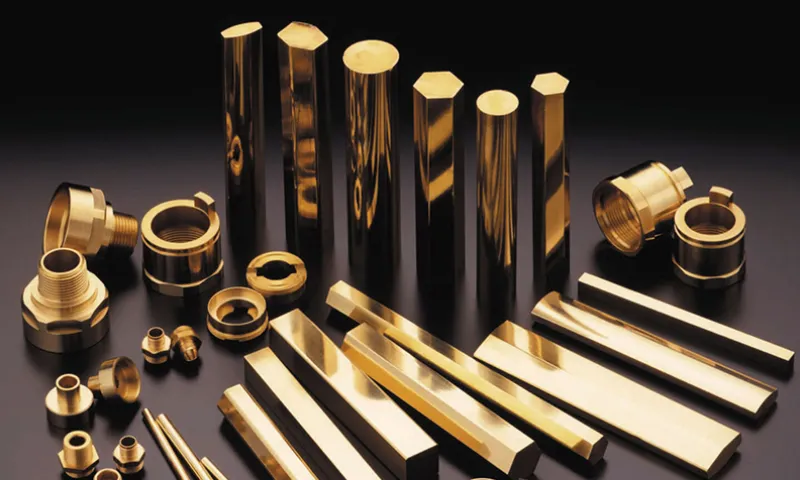 Manufacturing Processes and Production Methods
Manufacturing Processes and Production Methods
Brass production begins with the melting of copper and zinc in induction or reverberatory furnaces at temperatures between 900-940°C. Modern foundries employ continuous casting techniques to produce brass billets and slabs with uniform microstructure, followed by hot working processes including extrusion, forging, and rolling at 600-800°C. Cold working methods such as drawing, stamping, and spinning refine mechanical properties through strain hardening. Leaded brasses (C36000 series) undergo free-machining operations where the dispersed lead particles act as chip breakers, achieving surface speeds up to 150 m/min in automatic screw machine applications. The global brass production reached approximately 12 million metric tons in 2023, with major consumption in plumbing, electrical, and decorative applications.
Mechanical and Physical Properties
The mechanical behavior of brass alloys varies significantly with zinc content and processing history:
- Tensile Strength: 300-700 MPa (annealed to hard temper)
- Elongation: 5-65% (depending on alloy and temper)
- Hardness: 60-180 HV (Vickers scale)
- Electrical Conductivity: 25-40% IACS (International Annealed Copper Standard)
- Thermal Conductivity: 100-130 W/m·K
Alpha brasses (≤35% Zn) demonstrate excellent cold working characteristics, while alpha-beta brasses (35-45% Zn) exhibit superior hot workability. The addition of 1% tin creates naval brass (C46400-C48600 series) with improved seawater corrosion resistance, and aluminum additions form a protective oxide layer for atmospheric exposure applications.
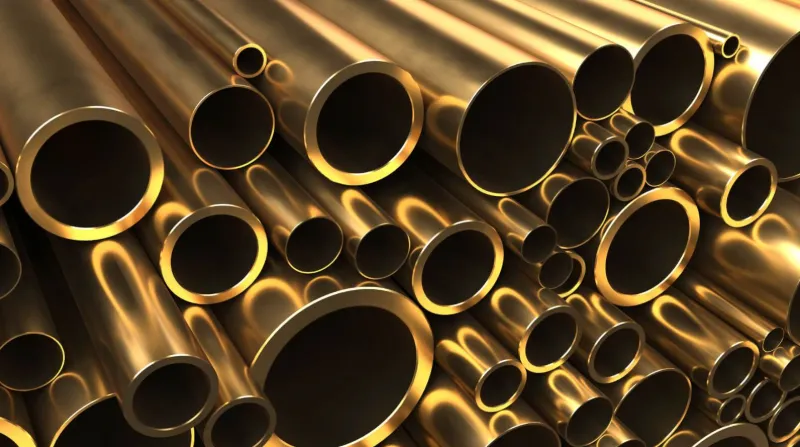
Corrosion Behavior and Environmental Resistance
Brass demonstrates generally good corrosion resistance, though specific mechanisms require consideration:
- Dezincification: Selective zinc leaching in acidic or high-chloride environments, mitigated by arsenic additions (0.02-0.1%) in dezincification-resistant (DZR) brasses
- Stress Corrosion Cracking: Ammonia-induced cracking in cold-worked components, addressed through stress-relief annealing
- Galvanic Corrosion: When coupled with more noble metals in electrolytic solutions
Protective measures include chromate passivation treatments, nickel plating for harsh environments, and proper alloy selection for specific service conditions. The natural patina that develops on exposed brass surfaces provides aesthetic appeal while offering moderate atmospheric protection.
Industrial Applications by Alloy Type
Different brass compositions serve specialized functions across industries:
- Cartridge Brass (C26000):
- 70% Cu, 30% Zn
- Ammunition cases, electrical connectors
- Excellent cold forming characteristics
- Free-Cutting Brass (C36000):
- 61.5% Cu, 35.5% Zn, 3% Pb
- Precision turned components, valve bodies
- Machinability rating of 100% (reference standard)
- Naval Brass (C46400):
- 60% Cu, 39.2% Zn, 0.8% Sn
- Marine hardware, propeller shafts
- Superior seawater resistance
- High-Strength Brass (C86300):
- 63% Cu, 25% Zn, 6% Al, 3% Mn, 3% Fe
- Heavy-duty bearings, gears
- Yield strength exceeding 550 MPa
- Nickel Silver (C74500):
- 65% Cu, 25% Zn, 10% Ni
- Musical instruments, optical frames
- Silver-like appearance with good tarnish resistance
Fabrication Techniques and Joining Methods
Brass components undergo various manufacturing processes:
- Forming: Deep drawing (up to 50% reduction per pass), spinning, and stamping operations utilize brass’s excellent malleability
- Machining: Leaded grades achieve surface finishes to 0.4 μm Ra with proper tool geometry and cutting fluids
- Joining:
- Soldering with tin-lead or silver-bearing alloys
- Brazing using BCuP or BAg series fillers
- Welding through gas tungsten arc (GTAW) or resistance methods
- Finishing:
- Polishing to mirror finishes (Ra <0.1 μm)
- Chemical brightening with nitric-sulfuric acid mixtures
- Antiquing treatments for decorative effects
Acoustic and Thermal Properties
Brass exhibits unique physical characteristics that enable specialized applications:
- Acoustic Performance:
- Velocity of sound: 3,700 m/s (longitudinal wave)
- Harmonic resonance properties ideal for musical instruments
- Bell metal compositions (20-25% Zn) produce clear tones
- Thermal Management:
- Coefficient of thermal expansion: 19-21 μm/m·°C
- Heat exchangers and radiator cores utilize thin-walled brass tubes
- Thermal fatigue resistance in repeatedly heated components
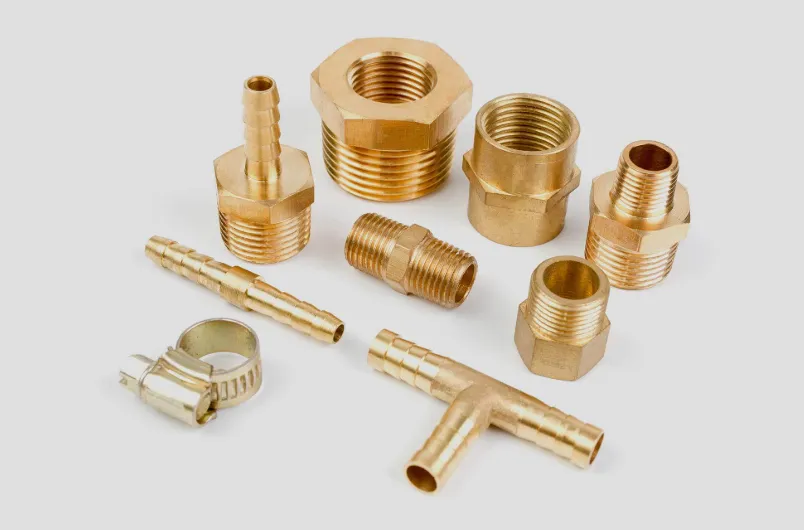
Economic Factors and Recycling
The brass industry maintains strong recycling infrastructure due to:
- Material Value: Brass scrap retains 80-90% of virgin material cost
- Energy Savings: Remelting requires only 10-15% of primary production energy
- Collection Efficiency: Over 85% of brass products eventually recycled
Current market dynamics show particular demand for lead-free brasses (C69300 series) in plumbing applications to meet regulatory requirements, while traditional leaded varieties remain dominant in precision machining sectors.
Emerging Developments and Research Directions
Contemporary brass technology focuses on several innovative areas:
- Biofouling-Resistant Alloys: Copper-nickel-zinc compositions for marine applications
- High-Conductivity Brasses: Silver-doped variants for electrical contacts
- Nanostructured Brasses: Severe plastic deformation processed materials
- Additive Manufacturing: Laser powder bed fusion of pre-alloyed brass powders
These advancements aim to expand brass applications in renewable energy systems, biomedical devices, and advanced electronics while maintaining its traditional strengths in mechanical and aesthetic applications.
Health and Safety Considerations
Brass fabrication requires attention to several occupational health factors:
- Lead Exposure: Engineering controls for machining leaded brasses
- Metal Fume Fever: Zinc oxide inhalation prevention during welding
- Dust Explosion Risks: Proper collection systems for brass powder
Regulatory frameworks including OSHA standards and REACH regulations govern brass production and handling, particularly regarding lead content in drinking water applications.
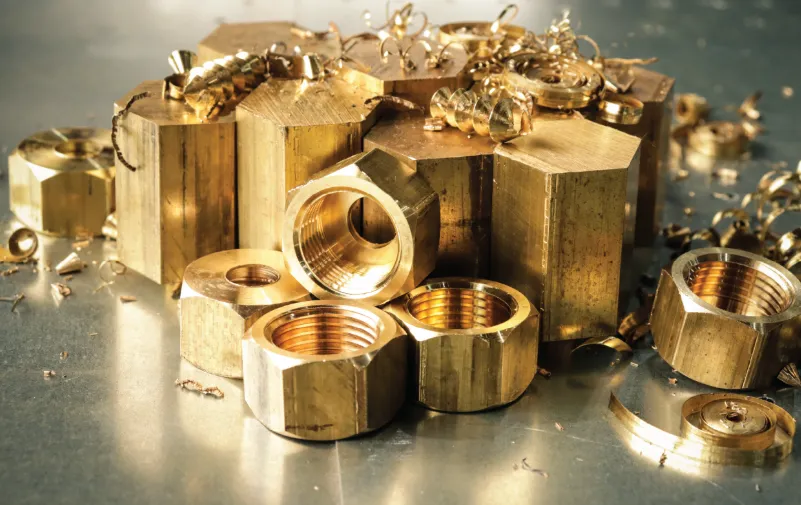
Artistic and Decorative Applications
Beyond industrial uses, brass serves important cultural functions:
- Architectural Elements: Door hardware, decorative panels
- Sculpture: Lost-wax casting techniques
- Musical Instruments: Trumpets, trombones, percussion
- Jewelry: Engraved pieces with patina finishes
The metal’s workability allows intricate detailing, while its evolving surface appearance creates dynamic visual effects in artistic compositions.
Standard Specifications and Quality Control
Brass products conform to numerous international standards:
- ASTM: B16 (free-cutting brass), B121 (architectural bronze)
- EN: CW614N (DZR brass), CW510L (leaded brass)
- JIS: C3604 (free-cutting), C3771 (forging brass)
Quality verification includes spectrochemical analysis, mechanical testing, and microstructural evaluation to ensure compliance with specification requirements.
Comparative Performance with Other Copper Alloys
Brass occupies a distinct position among copper-based materials:
- Versus Bronze: Lower cost than tin bronzes, though less wear resistant
- Versus Copper: Higher strength with moderate conductivity reduction
- Versus Cupronickel: Less expensive but inferior seawater resistance
This balance of properties ensures brass remains the most widely used copper alloy family worldwide.
Global Production and Market Trends
Major brass producing regions demonstrate specialized focuses:
- Europe: High-value engineered components
- North America: Architectural and plumbing products
- Asia: Mass-produced fittings and electrical parts
Recent trade patterns show increasing exports of semi-finished brass products from Asia to Western markets, while specialty alloys often flow in the opposite direction.
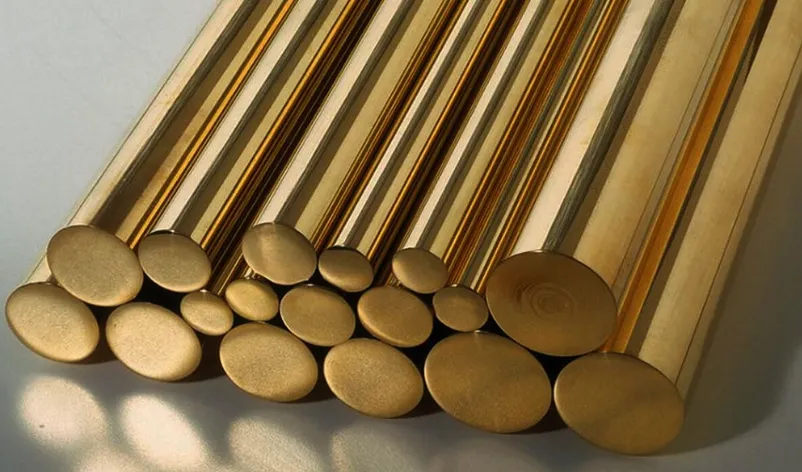
Microstructural Science and Phase Transformations
The metallurgy of brass involves complex solid-state reactions:
- Order-Disorder Transition: β-phase ordering below 450°C
- Recrystallization: Typically between 400-600°C after cold work
- Grain Growth: Controlled through annealing parameters
Advanced characterization techniques including electron backscatter diffraction (EBSD) reveal deformation textures critical for forming operations.
Tribological Performance and Wear Mechanisms
Brass exhibits unique wear characteristics:
- Adhesive Wear: Moderate resistance, improved with lead additions
- Abrasive Wear: Limited performance without hard phases
- Fretting: Susceptible without proper lubrication
Bearing applications often employ high-strength manganese brasses (C86300) or leaded nickel brasses (C98200) for improved service life.
Casting Technologies and Defect Prevention
Brass foundries employ various techniques:
- Sand Casting: For complex shapes in small quantities
- Die Casting: High-volume production of precise components
- Continuous Casting: For rod and tube stock
Common defects like porosity and inverse segregation require careful control of pouring temperature and solidification rates.
Electrical and Electronic Applications
Brass serves critical functions in power systems:
- Connectors: Balance of conductivity and spring properties
- Switchgear: Arc-resistant compositions
- RF Shielding: Electromagnetic interference protection
Special low-zinc brasses maintain higher conductivity for sensitive electrical components.
Thermal Processing and Heat Treatment
Brass responds to various thermal treatments:
- Annealing: 425-650°C to relieve stresses or recrystallize
- Stress Relief: 200-300°C for dimensional stability
- Precipitation Hardening: Certain aluminum-containing alloys
Controlled atmosphere furnaces prevent excessive oxidation during processing.
Environmental Interactions and Patina Formation
Atmospheric exposure creates characteristic surface layers:
- Initial Tarnish: Copper oxide formation (days to weeks)
- Intermediate Stage: Basic copper carbonate (months)
- Mature Patina: Stable copper sulfates/chlorides (years)
Conservation techniques for historical brass items balance preservation with aesthetic requirements.
Regulatory Developments and Material Restrictions
Evolving legislation impacts brass applications:
- Lead Restrictions: Safe Drinking Water Act amendments
- REACH Compliance: Registration of alloy constituents
- RoHS Directives: Electrical equipment requirements
Alloy developers continue formulating compliant brasses with equivalent performance.

Advanced Analytical Techniques
Modern brass characterization employs:
- EDS/WDS: Precise composition mapping
- XRD: Phase identification and residual stress analysis
- TEM: Dislocation structure examination
These methods support alloy development and failure analysis.
Future Material Innovations
Research pipelines include:
- High-Entropy Brass Alloys: Multiple principal elements
- Self-Healing Coatings: For corrosion protection
- Smart Brasses: Temperature-responsive properties
Such advancements may redefine brass applications in coming decades.




